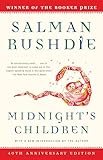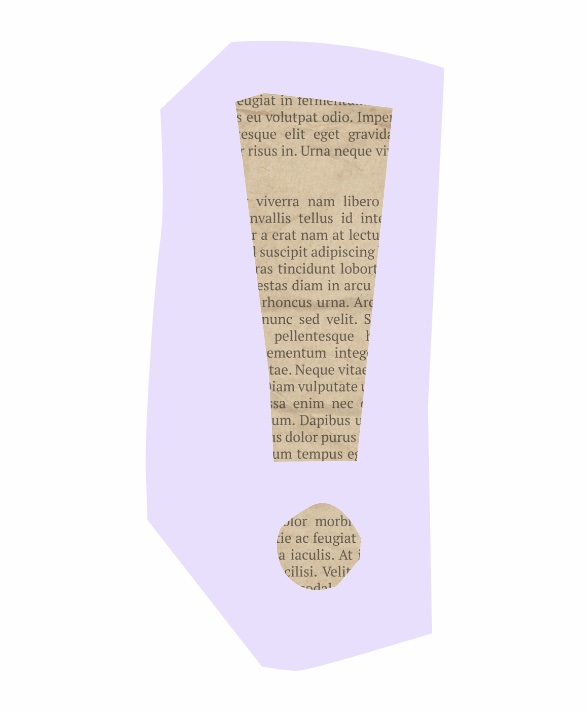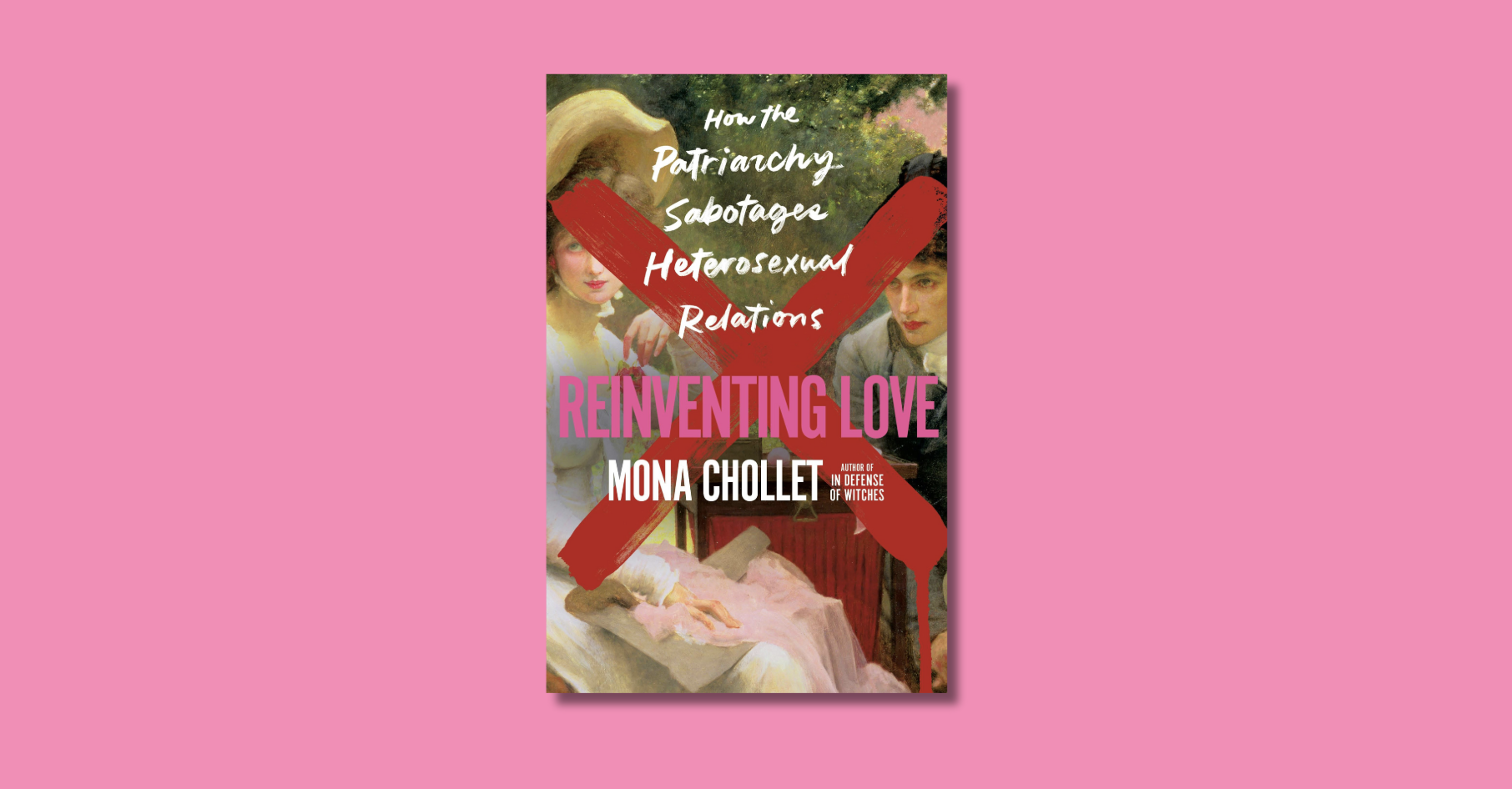Noisy. Hysterical. Brash. The textual version of junk food. The selfie of grammar. The exclamation point attracts enormous (and undue) amounts of flak for its unabashed claim to presence in the name of emotion which some unkind souls interpret as egotistical attention-seeking. We’ve grown suspicious of feelings, particularly the big ones needing the eruption of a ! to relieve ourselves. This trend started sometime around 1900 when modernity began to mean functionality and clean straight lines (witness the sensible boxes of a Bauhaus building), rather than the “extra” mood of Victorian sensitivity or frilly playful Renaissance decorations.
Things need to make sense, and the ! just doesn’t, subjective and subversive as it is, popping out from the uniform flow of words on the line. Since the triumphal conquering of smartphone technology and social media, the exclamation point finds fewer and fewer friends: We live in a digital village, chatting to one another from across the globe, and will use emotive social cues such as the exclamation point, and plenty of them. And because we just need to press down a thumbbbbbb to reproduce any character at nearly no cost, we’re more likely to flood the digital world with !!!!!!. No wonder we’re a little allergic to the poor !, stigmatizing its ubiquity as annoying and unnecessary. Along came Donald Trump and gave ! the coup de grâce by larding his tweets with exclamation points during his electoral campaign and presidency. Through Trump’s posturing and the mark’s erect body and one-balled bottom, ! has become “aggressively phallic,” and is in bad need of saving.
Thankfully, neither attitudes towards the exclamation point, nor its functions, have always been as negative and harmful. For hundreds of years, writers enjoyed the punchy power of a well-placed !, wielding its mighty sword of “here be feelings!” with aplomb and persuasiveness. Here are five ways that literature can recuperate the abused exclamation point.
1. Conspicuously absent.
 Ernest Hemingway is the king of understatement. Gruesome battles, gory wounds, death stealing a baby out of a mother’s arms—none of those deserve a relieving exclamation point, or narrative comment guiding our feelings. We have to do all the emotional labour ourselves, as the author serves us the bare bones of action only in his fusion of fiction with a journalistic style of observation. In his Nobel Prize-winning 1954 novel The Old Man and the Sea, Hemingway holds the emotional tone as flat as an unruffled water surface, until the old man believes a giant marling has swallowed his bait, and he’s waiting for just the perfect moment to pull the pole:
Ernest Hemingway is the king of understatement. Gruesome battles, gory wounds, death stealing a baby out of a mother’s arms—none of those deserve a relieving exclamation point, or narrative comment guiding our feelings. We have to do all the emotional labour ourselves, as the author serves us the bare bones of action only in his fusion of fiction with a journalistic style of observation. In his Nobel Prize-winning 1954 novel The Old Man and the Sea, Hemingway holds the emotional tone as flat as an unruffled water surface, until the old man believes a giant marling has swallowed his bait, and he’s waiting for just the perfect moment to pull the pole:
Come up easy and let me put the harpoon into you. All right. Are you ready? Have you been long enough at table? “Now!” he said aloud and struck hard with both hands, gained a yard of line and then struck again and again, swinging with each arm alternately on the cord with all the strength of his arms and the pivoted weight of his body.
The exclamation point falls flat. All the expectation and excitement rushing into the uplifting mark, and then—nothing. The marling keeps on swimming for another 100 pages. This punctuation tsunami lifts itself out of nowhere and goes nowhere. Hemingway plays tricks on our feelings with this exclamation anti-climax, standing starkly out as the only ! in the novel, just as the rest of the lonely 59 exclamation points dotting Hemingway’s entire works. !‘s presence can produce big emotions. And so can its absence.
2. The more the better.
 If Hemingway is the master of one, Salman Rushdie juggles with infinity. In his acclaimed 1981 novel Midnight’s Children, Rushdie uses the staggering number of 2.131 !s—and average of six exclamation points per page! That’s a lot of shouting. Rushdie’s novel traces the life of children born at the stroke of midnight on the day of Indian liberation from the British empire on August 15, 1947. All of them possess magical abilities, and the book portrays a world flush with supernatural energies, different languages turning into one another, thoughts, feelings, places, and motivations, all jostling for prominence. So much life, jumping from the page needs a punctuation springboard, and the exclamation point is happy to provide. Rushdie received the Booker Prize for Midnight’s Children, as well as the Booker of Bookers among all winners—twice! There must be something about those !s that caught the judges’ eyes.
If Hemingway is the master of one, Salman Rushdie juggles with infinity. In his acclaimed 1981 novel Midnight’s Children, Rushdie uses the staggering number of 2.131 !s—and average of six exclamation points per page! That’s a lot of shouting. Rushdie’s novel traces the life of children born at the stroke of midnight on the day of Indian liberation from the British empire on August 15, 1947. All of them possess magical abilities, and the book portrays a world flush with supernatural energies, different languages turning into one another, thoughts, feelings, places, and motivations, all jostling for prominence. So much life, jumping from the page needs a punctuation springboard, and the exclamation point is happy to provide. Rushdie received the Booker Prize for Midnight’s Children, as well as the Booker of Bookers among all winners—twice! There must be something about those !s that caught the judges’ eyes.
3. To hell with propriety!
Lovers of eighteenth-century literature like to tout Jane Austen as the prim pristine lady novelist representative of the tender emotions and unspoken rules of Georgian society. Her books, however, are watered-down versions of her unadulterated manuscripts, filtered through several rounds of editing that have erased the real Austen, passionate, spontaneous, and alive to the rhythms of conversation. Oxford Professor Kathryn Sutherland has published the surviving Austen autographs, witnessing a writer that’s much sloppier and real than we’re used to, and maybe comfortable with.
 In Austen’s last novel, Persuasion, the heroine Anne finally has a clarifying conversation with her romantic interest Captain Wentworth after nearly a decade of will-they-won’t-they. In the posthumously printed text, Anne weakly berates Wentworth for thinking she is still the same young person: “‘You should have distinguished,’ replied Anne. ‘You should not have suspected me now; the case so different, and my age so different.’” The manuscript, on the other hand, shows a woman fervent and warm in her finally honest heart-to-heart with the man of her life: “You should have distinguished—replied Anne—You should not have suspected me now;—The case so different, & my age so different!—” Dashes, underlinings, scratchings-out, and the tell-tale exclamation point paint a much-needed new picture of an established author who doesn’t shy away from letting her “elegant females” exclaim in the name of love. Only that this was too much eagerness for her male editors who muted her voice through flattening out her varied punctuation. If in doubt, be Jane, and exclaim!
In Austen’s last novel, Persuasion, the heroine Anne finally has a clarifying conversation with her romantic interest Captain Wentworth after nearly a decade of will-they-won’t-they. In the posthumously printed text, Anne weakly berates Wentworth for thinking she is still the same young person: “‘You should have distinguished,’ replied Anne. ‘You should not have suspected me now; the case so different, and my age so different.’” The manuscript, on the other hand, shows a woman fervent and warm in her finally honest heart-to-heart with the man of her life: “You should have distinguished—replied Anne—You should not have suspected me now;—The case so different, & my age so different!—” Dashes, underlinings, scratchings-out, and the tell-tale exclamation point paint a much-needed new picture of an established author who doesn’t shy away from letting her “elegant females” exclaim in the name of love. Only that this was too much eagerness for her male editors who muted her voice through flattening out her varied punctuation. If in doubt, be Jane, and exclaim!
4. Exclaiming before exclaiming.
German doesn’t have a word for “mind”. Does that mean Germans don’t understand the concept? What if your native language doesn’t have a word for an object, or a feeling, or a state of being: Would you still be able to know, feel, and comprehend? According to linguistics Edward Sapir and Benjamin Lee Whorf, language shapes our perception rather than the other way around. What about punctuation? If you don’t know an exclamation point, how do you exclaim in writing? And is it fair to sneak a handful of !s into an old text to jazz up the mood?
 Eric Weiskott, professor of English at Boston College, believes it’s sacrilege to zhuzh up a grand old story like the medieval epic Beowulf with a mark of punctuation he deems ‘screechy’ and ‘frenetic’, a ‘purely theatrical flourish’ that’s the ‘typographical equivalent of junk food’: oh-so tasty, but really really bad for you. Weiscott takes issue with nineteenth-century editors anachronistically introducing a sign into a text whose authors did not have said sign at their disposal. This falsifies the tone of the majestical story of peoples and dragons, kings, heroes, monsters, and mothers.
Eric Weiskott, professor of English at Boston College, believes it’s sacrilege to zhuzh up a grand old story like the medieval epic Beowulf with a mark of punctuation he deems ‘screechy’ and ‘frenetic’, a ‘purely theatrical flourish’ that’s the ‘typographical equivalent of junk food’: oh-so tasty, but really really bad for you. Weiscott takes issue with nineteenth-century editors anachronistically introducing a sign into a text whose authors did not have said sign at their disposal. This falsifies the tone of the majestical story of peoples and dragons, kings, heroes, monsters, and mothers.
 Maria Dhavana Headley couldn’t disagree more: the poet has “translated” the Old English into current English with all its rough edges and topical internet-speak. We get hashtags, we get the F-word, and we get exclamation points when the speaker commands our attention. “Bro!” Headley’s Beowulf starts controversially, interpreting the famously versatile Anglo-Saxon “hwaet” (something like “listen”) like a shout for silence in a pub full of beer-drinking dudes. Headley gives the old story freshness and relevance without rendering it ridiculous. It’s true that ! didn’t exist in the ninth century. But we need to decide if we want to stay historically accurate, or offer a wide readership effective texts. The exclamation point can be that bridge between the distant past and our close-up present.
Maria Dhavana Headley couldn’t disagree more: the poet has “translated” the Old English into current English with all its rough edges and topical internet-speak. We get hashtags, we get the F-word, and we get exclamation points when the speaker commands our attention. “Bro!” Headley’s Beowulf starts controversially, interpreting the famously versatile Anglo-Saxon “hwaet” (something like “listen”) like a shout for silence in a pub full of beer-drinking dudes. Headley gives the old story freshness and relevance without rendering it ridiculous. It’s true that ! didn’t exist in the ninth century. But we need to decide if we want to stay historically accurate, or offer a wide readership effective texts. The exclamation point can be that bridge between the distant past and our close-up present.
5. Oh-ing and ah-ing.
Punctuation functions as the inky semaphore of the sentence. It tells our eyes where to linger, our minds to assimilate, and our breath to pause, catch itself, and propel the voice forward, whether that one in our heads or mouths. Punctuation is body, and no mark more than the exclamation point. As the period explodes its head, mushrooming into a !, so does the exclamation erupt from our diaphragms, pushing its way through our vocal cords into the ambient air. Early twentieth-century poet Gerard Manley Hopkins knew this when he peppered his lyrics with “Oh!” and “Ah!” Praising God’s gorgeous creation such as a windhover, Hopkins’s speakers frequently burst into ululation from sheer sublime wonder at the world:
Brute beauty and valour and act, oh, air, pride, plume, here
Buckle! and the fire that breaks from thee then, a billion
Times told lovelier, more dangerous, O my chevalier!
And with exclamations reduced to, or returning, a wordless sigh, Hopkins brings ! home to its roots: expressing admiration and wonder. Around 700 years ago, in the small town of Urbisaglia in central Italy, the scholar and poet Alpoleio felt moved to introduce a punctuation mark that flagged up emotion rather than simply syntax. Annoyed that people were reading exclamations like statements or questions, he suggested appending an emotional sentence with a dot plus apostrophe dangling from the line above. He called the new sign the punctus admirativus, the point of admiration or wonder. That was the birth of the exclamation point, and it’s precisely what writers know: A strategic ! (or several) can make your readers go “wow!” So, whenever you’re unsure of whether to stick your neck out and shout or not, remember Jane Austen and Salman Rushdie: permission to exclaim granted!









